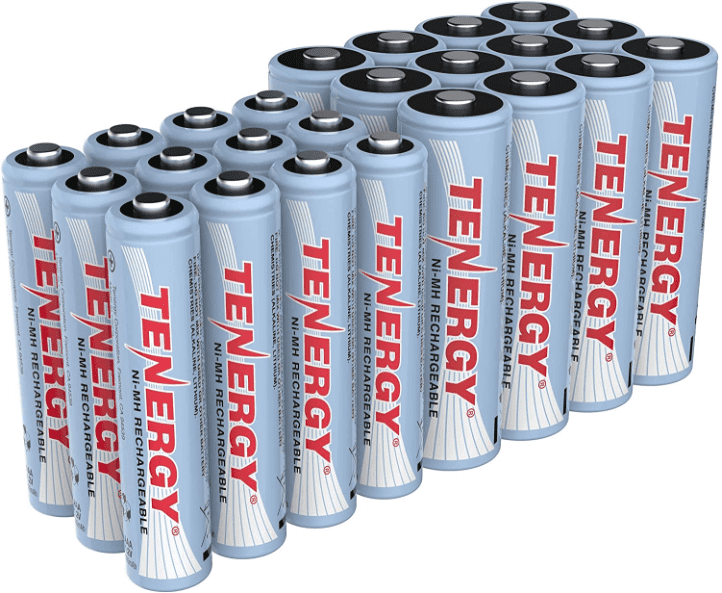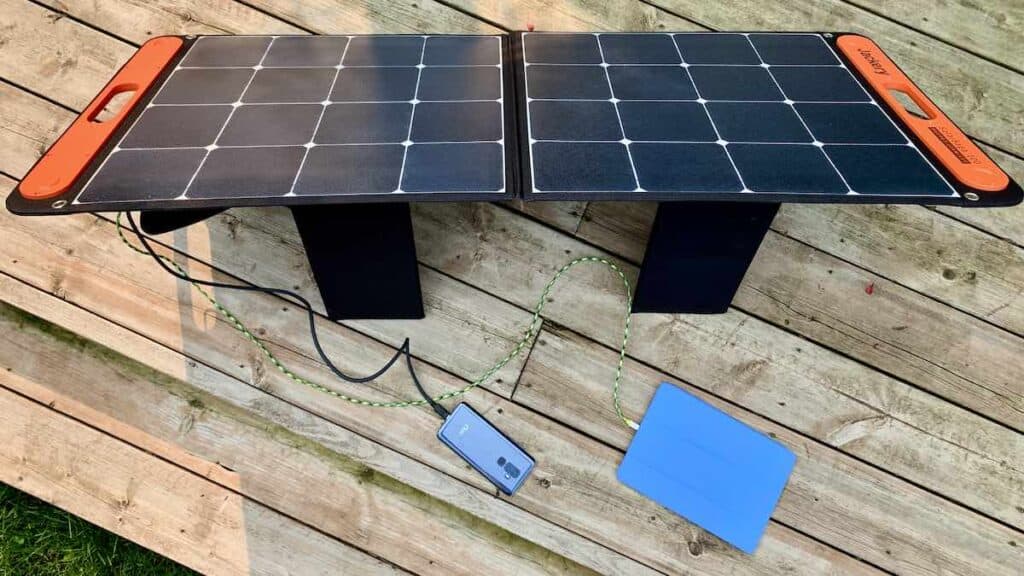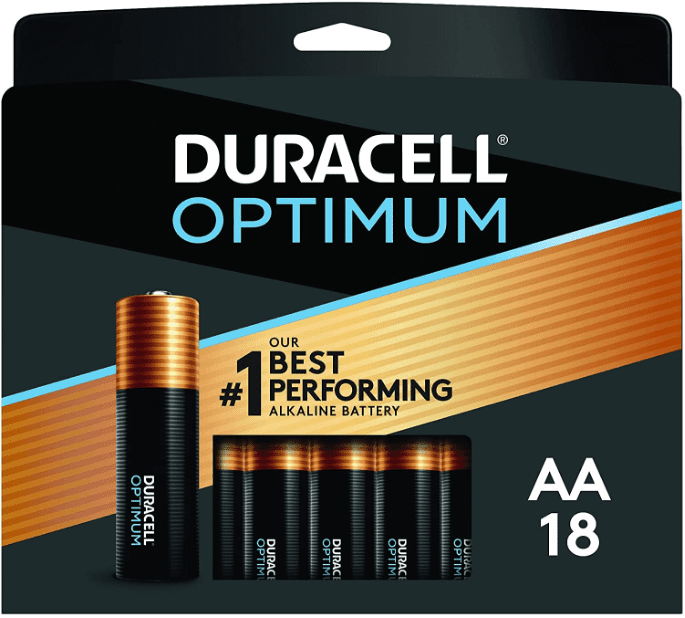A good stash of batteries is a preparedness essential. From the standard AA to larger 12V batteries, this article takes a look at the different types of rechargeable batteries out there and what you need to know about them.
Battery banks can help get you through some major storms by providing enough power to keep you a little more comfortable and entertained.
Rechargeable Basics
In our household, we have made an effort to buy devices that take the same types of batteries whenever possible. AA or AAA are the most common batteries for devices overall, so that is what we have gone with over the years.Obviously, for devices like smoke detectors 9-volt batteries common. While you can get rechargeables, smoke detector batteries last long enough that it doesn’t seem worth it to us. It doesn’t seem like many things beyond that take a 9V.
Larger flashlights and some kid’s toys sometimes take C batteries. We keep a few C’s around for this purpose.
Rechargeable Batteries Vary in Capacity
Not all AAs are equal. While a 1.5V AA battery has a limit to how much power it can hold, what you get when you buy rechargeables vary quite a bit. Generally speaking, the batteries that hold a greater charge will cost slightly more, but in my opinion, they are worth it. More power means fewer changes and more time between charges. This is particularly helpful when you are using rechargeables in high-drain devices or devices that get used frequently.
Rechargeable Brands
Amazon Generic BatteriesThese batteries are ok for general use, but I have to say that they do not hold a charge for as long as I would like for some things. This means if you have a bunch of charged-up batteries stored, you are probably going to have to partially recharge them within a month or two. That has just been our experience. It can be hard to remember to cycle batteries through. Of course, keeping them topped off by recharging takes some energy. If you are just letting batteries sit and then topping them off a lot, you may be wasting quite a bit of power. If you are using a solar charge, this may not be that big of a deal, but if you are paying for power from a company, you may want to consider how many batteries you are keeping topped off. Remember that all batteries are only good for so many cycles; after that, their ability to hold a charge is going to be reduced.
Tenergy
This company used to be known as N-Energy. My husband and I have used the Tenergy rechargeables for many years. They are the best we have found for holding an extended charge. On Amazon, you can get starter packs with a charger and a wide selection of batteries for a good price. If you need to add packs of batteries at any time, they always seem to be available, and the price is still good even if you are just getting a 2-pack of C’s or an 8-pack of AA.
Solar 12V Batteries
My husband and I have used solar power in our home for years. We have gone through a few lead-acid batteries in our time. There have also been times when we were very busy and did not take care of them as well as we should, so they had to be replaced sooner.It seems that lead-acid has a lower cost upfront, but they don’t save much over the years compared to lithium. Now that major retailers online are selling lithium 12V batteries, it is much easier to get them. In the past, it was just easier to pop on down to Autozone and pick up a few marine or golf cart batteries, especially when you added in the discounts that are typically available.
Now that seems like a lot of heavy lifting and hassle. At the time of writing, we have two 200 amp-hour lithium 12V batteries on the way.
Lithium Pros
- Lithium batteries weigh less than lead-acid batteries. Lithium batteries are around 50% lighter, so they are easier to move around and cost less to ship.
- No need to top off water or perform other maintenance
- Long life
- Higher cost
- More flammable and dangerous if they do catch on fire or explode
- Usually have to be ordered and shipped
- Lower cost
- Available at any auto parts store or big box store with an auto section
- Often require maintenance. Water levels need to be monitored.
- Very heavy
These are typically sold in 100-amp hour and 200-amp hour sizes. Something I learned about lithium batteries and solar is that you want to buy all the batteries for your system within six months for best results. Having a lot of batteries that vary in age is not efficient.
The Ampere Time 200-amp hour version weighs about what a standard lead-acid battery does that holds half the charge. The listed weight for this version is just over 47 lbs.
Note: I encourage you to check the price on eBay and Amazon before ordering this brand. We saved about $100 on two batteries by ordering direct from Ampere Time on eBay.
Solar Battery Charging
For prepping purposes, I recommend having some type of setup for charging batteries via solar power. Here are a few options with varying costs.Power Center
Even the most diminutive Jackery Power Center with a 50-watt portable solar panel can provide a lot of power to run to charge batteries. Using a power center system allows for a lot of versatility when it comes to backup power. You can just use the plug-in or USB chargers that come with your rechargables.
[caption id=“attachment_508920” align=“aligncenter” width=“754”]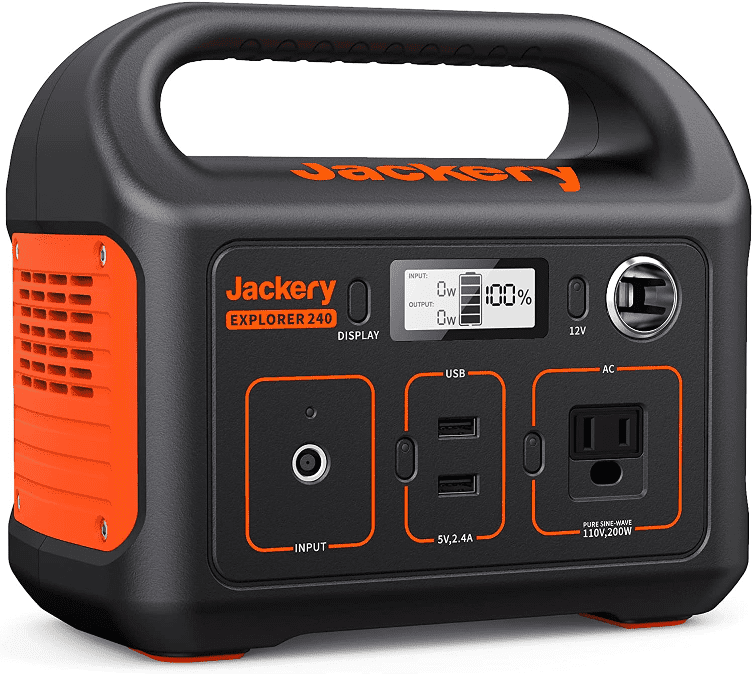 The Jackery Explorer 240 is an affordable small power center with an excellent reputation.[/caption]
The Jackery Explorer 240 is an affordable small power center with an excellent reputation.[/caption]
C Crane
These devices use a small solar panel to charge some AA or AAA batteries. They can often be charged using USB if solar is not convenient.
[caption id=“attachment_508922” align=“aligncenter” width=“639”]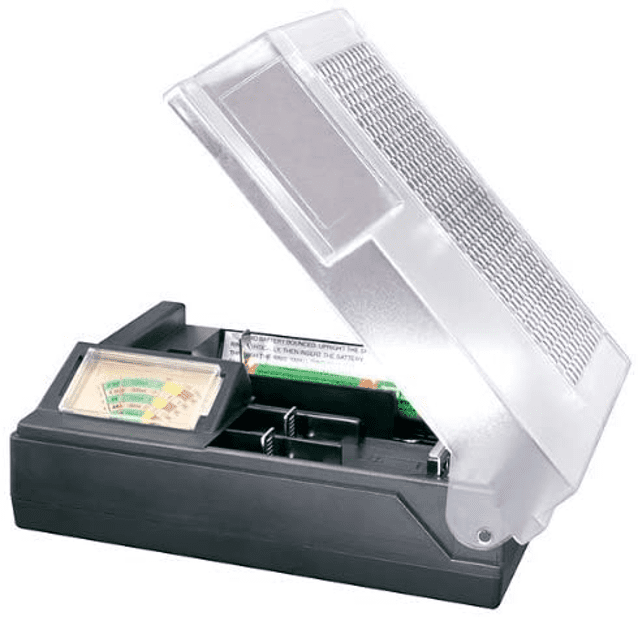 The C Crane battery charger can charge any size of battery via the built-in solar panel.[/caption]
The C Crane battery charger can charge any size of battery via the built-in solar panel.[/caption]
Foldable Solar Panels
A lot of portable solar panels have USB ports that, when combined with the right USB cable, allow you to directly charge devices as long as the solar panel has adequate sunlight. Jackery makes some high-quality portable panels, but they are somewhat expensive. There are plenty of smaller portable panels available on Amazon or eBay that have USB charging capability. Some of the portable panels are made to be worn on a backpack so you can charge batteries or devices as you like.
Using the USB charging option also means you can hook up almost any USB-powered battery charger.
How many rechargeable batteries do you need
It may take a little time to survey all of your battery-operated devices, but you should add up how many of each type you need to run. Now, take that number and add 25% to it. I throw that percentage out there because it is unrealistic to expect anyone to remember to recharge a set of batteries right away every single time they are depleted. Then you need to consider that you may buy something else that takes a common battery type.Even then, it still might be a good idea to buy a few rechargeables every time you add a few battery-using devices to your home.
Traditional Batteries
I fully support having some non-rechargeable batteries on hand. There are some devices you do not want rechargeables for. An example of this is an emergency flashlight you keep in your car. The last thing you want to happen is to find out the rechargeable you left in your flashlight have discharged over time, and you have a useless flashlight.Duracell Optimum
These batteries are not cheap, but they have a big charge that stays good for a long time. I recommend having a few packs of Duracell Optimum on hand. These are an excellent choice for smoke detectors too
Battery Maintenance and Storage
Storing batteries should be taken seriously. Non-rechargeable batteries are prone to corrosion if stored poorly. Rechargeables seem to be a bit less prone, in my opinion.I recommend having a battery box or two that encourages proper storage. Battery organizer come in all shapes and sizes. The plastic case below have appropriately sized slots to store a variety of batteries. A clear lid makes it easy to see what you have on hand.
[caption id=“attachment_508924” align=“aligncenter” width=“716”]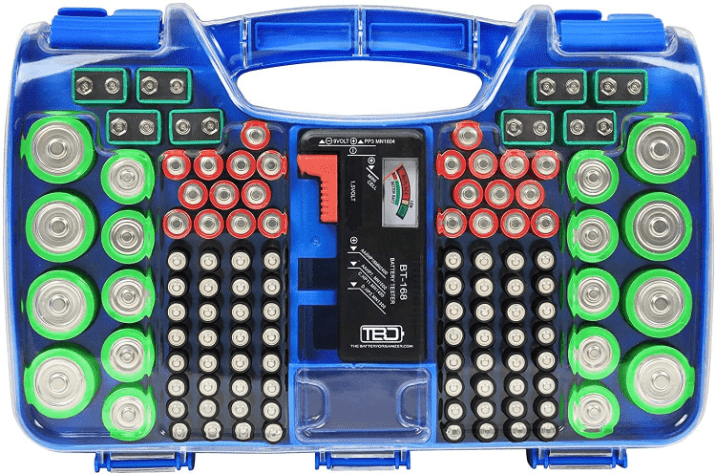 This battery organizer is a great example of a battery box for storing your stash. I like that it accommodates all sizes of batteries.[/caption]
This battery organizer is a great example of a battery box for storing your stash. I like that it accommodates all sizes of batteries.[/caption]
Large batteries such as those used for solar arrays or cars, trucks, and other machines, should be stored in a battery box if not being used in a vehicle or machine.
[caption id=“attachment_508925” align=“aligncenter” width=“545”]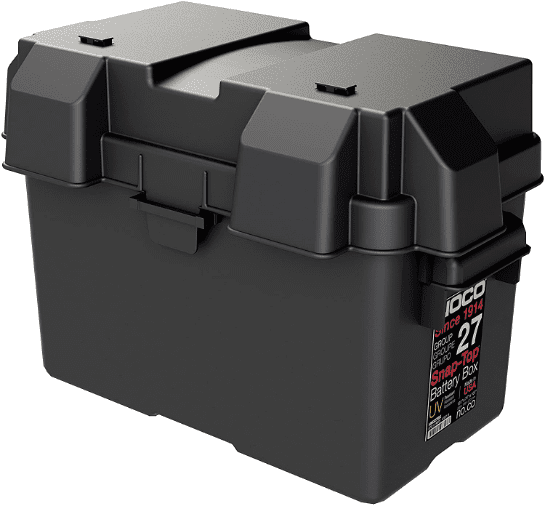 A good battery container encloses your battery in a vented box. Your battery is protected from impacts and accidental shorting. If battery acid leaks or spills, the box will collect it so it doesn’t run everywhere.[/caption]
A good battery container encloses your battery in a vented box. Your battery is protected from impacts and accidental shorting. If battery acid leaks or spills, the box will collect it so it doesn’t run everywhere.[/caption]
There are some really neat battery boxes out there. Some have small inverters and charge controllers, so basically, all you have to do if you want a portable power center is drop a battery in the box and maybe by an inverter that fits into a standard 12V outlet, so you have input options such as a 110V plug or USB. You can also get plug-ins that split the single 12V power outlet into 2-4 outlets. Keep in mind the amount of power you can draw at one remains the same.
[caption id=“attachment_508927” align=“aligncenter” width=“845”] The Newport Vessels battery box offers storage and the convenience of a small portable power center. Just add a battery that is Group 24 or 27 size.[/caption]
The Newport Vessels battery box offers storage and the convenience of a small portable power center. Just add a battery that is Group 24 or 27 size.[/caption]
Battery Disposal
If you have automotive or marine batteries, you can save them and then return them to the store the next time you need a battery. The auto shop will recycle the battery for you and give you some money for the core. This reduces the cost of future battery purchases.Common household batteries can be recycled in most areas. If you find that you want to just dispose of a larger battery, you may need to contact your waste service or check out the garbage service website in your area.
Conclusion
It is essential to have a good battery system for your household. During emergencies, batteries can keep things going and add to your comfort or even your chances of survival.You should assess how many batteries you need to power all your devices and allow for a few extra. Most devices that use conventional batteries use AA or AAA, but lithium is becoming more common than it once was.
Storing batteries properly reduces the risk of corrosion. If you are not going to use a device for a few months or longer, you should consider removing the batteries to eliminate the risk of battery corrosion and a ruined device.
Remember to occasionally replace rechargeable batteries. While they say that they are good for so many charging cycles, that doesn’t mean they will hold a charge as well towards the end of their life. If a battery stops holding a decent charge, then it is time to toss it.
This is a companion discussion topic for the original entry at https://peakprosperity.com/blackout-a-primer-on-rechargeable-batteries/
